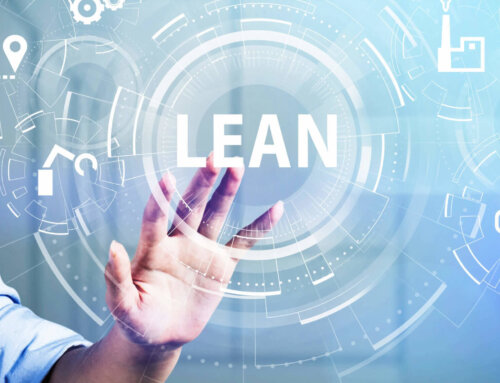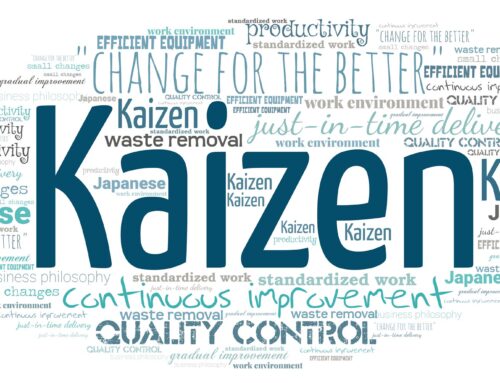By Walt Tarpley, Vice President of Client Services for Manex
At a high-level, both Lean and Six Sigma include sets of tools for improving a process or product, and have foundations in the scientific method, while requiring leadership to drive business results. Lean is a business system that seeks the ideal, and Six Sigma is a variation reduction approach. Lean’s underlying science is industrial engineering, while Six Sigma’s underlying science is statistics. Both originated in manufacturing and have been adapted by service-oriented businesses and healthcare. Successful professionals in both have highly developed facilitative skills and focus on building capacities and capabilities. To the external observer, Lean appears event-driven, while Six Sigma appears project-driven. This blog piece is not geared to be an exhaustive overview of tools, acronyms, and approaches, but rather the key facts of both Lean and Six Sigma.
Lean uses facilitated team problem-solving activities (i.e. Kaizen events) to drive out process wastes. Kaizen is the discipline of going to the actual place where work is done (gemba) or where there is a problem, directly observing the facts, and making rapid practical improvements based on the scientific method. Lean’s five principles are to create the focus on: 1) Customer Value, 2) Value Stream, 3) Flow, 4) Pull, and 5) Perfection (in that order).
A fundamental tool of Lean is the elimination of waste, to seek this ideal. So, the Lean system teaches everyone to identify and eliminate these eight wastes:
- Defects
- Overproduction
- Waiting
- Not engaging employees
- Transportation
- Inventory
- Motion
- Excessive Processing or Packaging.
The DOWNTIME acronym helps to recall the eight wastes that impede flow to build customer value. Lean methods first identify your key operational issues preventing growth or controlling costs, then create a focus on team intellect to establish standards of best practice as common knowledge.
Both Lean and Six Sigma use the scientific method. Lean advocates Plan-Do-Check-Act (PDCA) as steps of the scientific approach, aligning with the “MAIC” portion of Six Sigma’s Define-Measure-Analyze-Improve-Control (DMAIC) phases of problem-solving.
Some issues are better suited to a more rigorous engineering statistics approach to reducing variation in the pursuit of perfection, which coincidently is the fifth principle of Lean. The foundational Six Sigma process are the DMAIC steps taken to reduce variation and increase quality:
- Define
- Measure
- Analyze
- Improve
- Control
Define is about creating a real understanding of the Gap and using the voice of the customer and scoping. We like to say that any problem statement should be SMART or Specific, Measurable, Attainable, Relevant and Timebound. Scope setting is critical to problem-solving, and requires a good understanding of customer outcomes, deliverables, process activities, and requirements.
The Measure looks at the true current state of the process through fact-finding and data collection. A core part of this process involves assuring the measures are suitable for making the decisions based on fact, and not erroneous data measures. To assure we don’t risk “garbage in, garbage out.”
Analyze focuses on identifying the causes to find a true root cause. This includes the experimental proof of being able to “turn off and on” your problem. Then through analysis of the ways your process and product can fail you can develop ideas for mistake-proofing.
The Improve phase is about the implementation of the solutions required to create change. The resulting testing, verification of your transformative action plan to create the desired changes in the result.
The Control phase assures you can achieve stability of results by integrating the countermeasures to sustain improvements. All processes have entropy without control.
Summary concepts:
- DMAIC + Lean = less waste and variation
- Processes erode without control
- Verify and measure performance but also “go see” the facts
- Better decisions come from better measures and controls
- Stability and standardization are critical prior to true improvement
- Observable/measurable results will come with discipline and learning
- Eliminate DOWNTIME by eliminating waste
About the Author
Walt Tarpley has over 25 years of extensive manufacturing experience and expertise in general management, manufacturing operations, quality systems, engineering, and continuous improvement initiatives, including Lean Manufacturing and Six Sigma. As an experienced change agent, he has led numerous process improvement initiatives resulting in top-line and bottom-line growth across a range of industry sectors and geographies, in 40 U.S. states, South Africa, Canada, Caribbean, Europe and the United Kingdom. Walt can be reached at wtarpley@manexconsulting.com.


